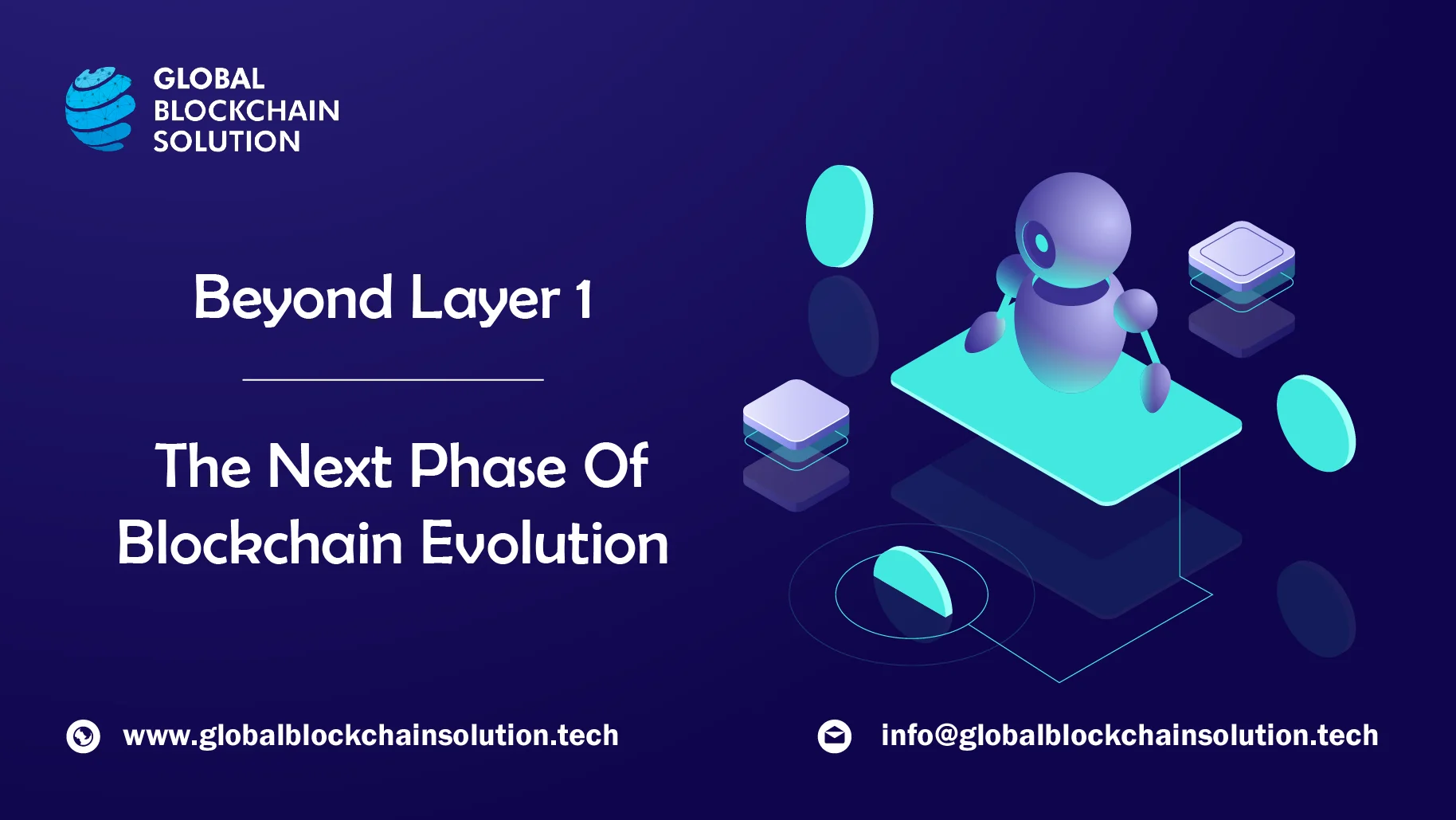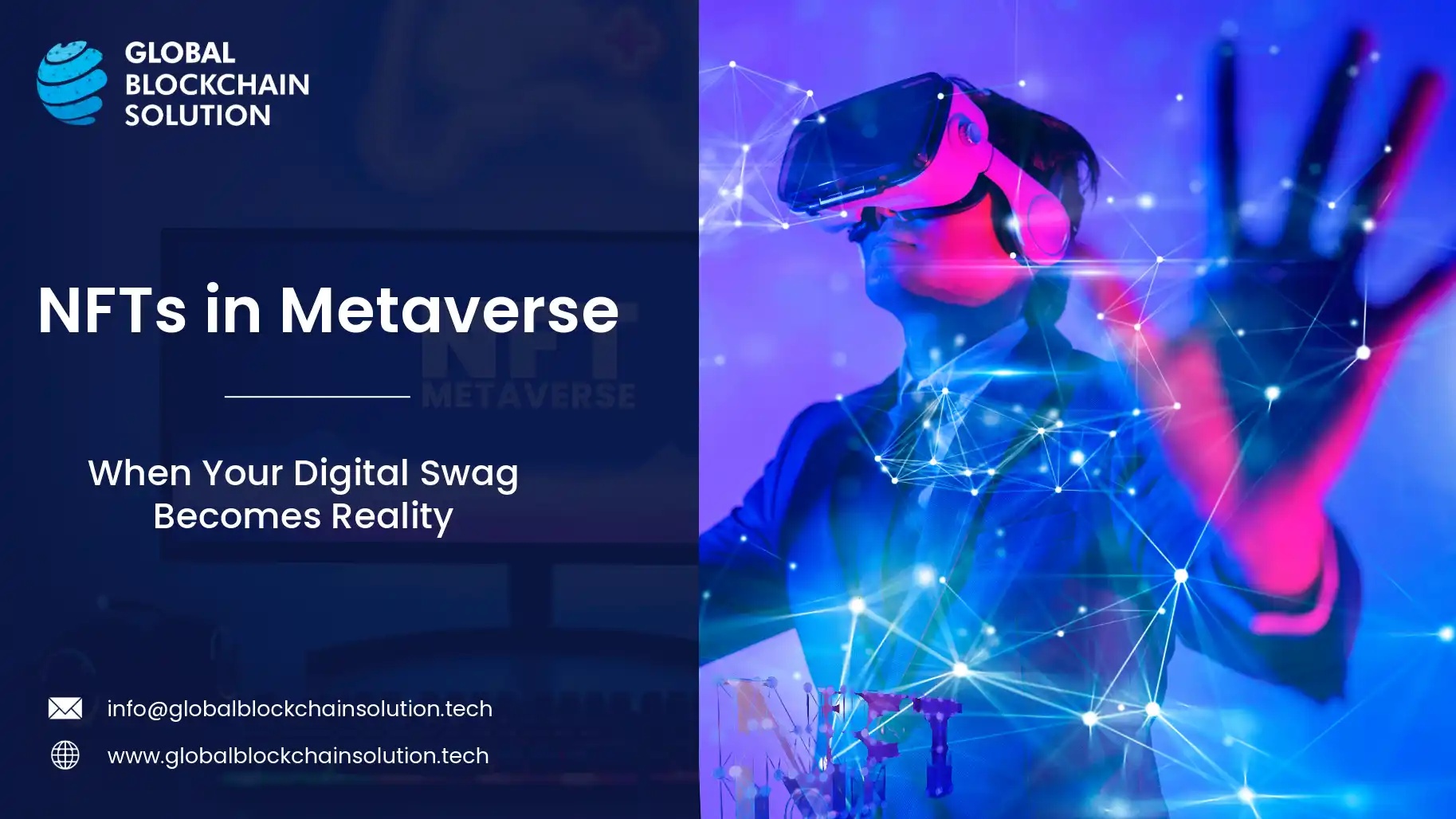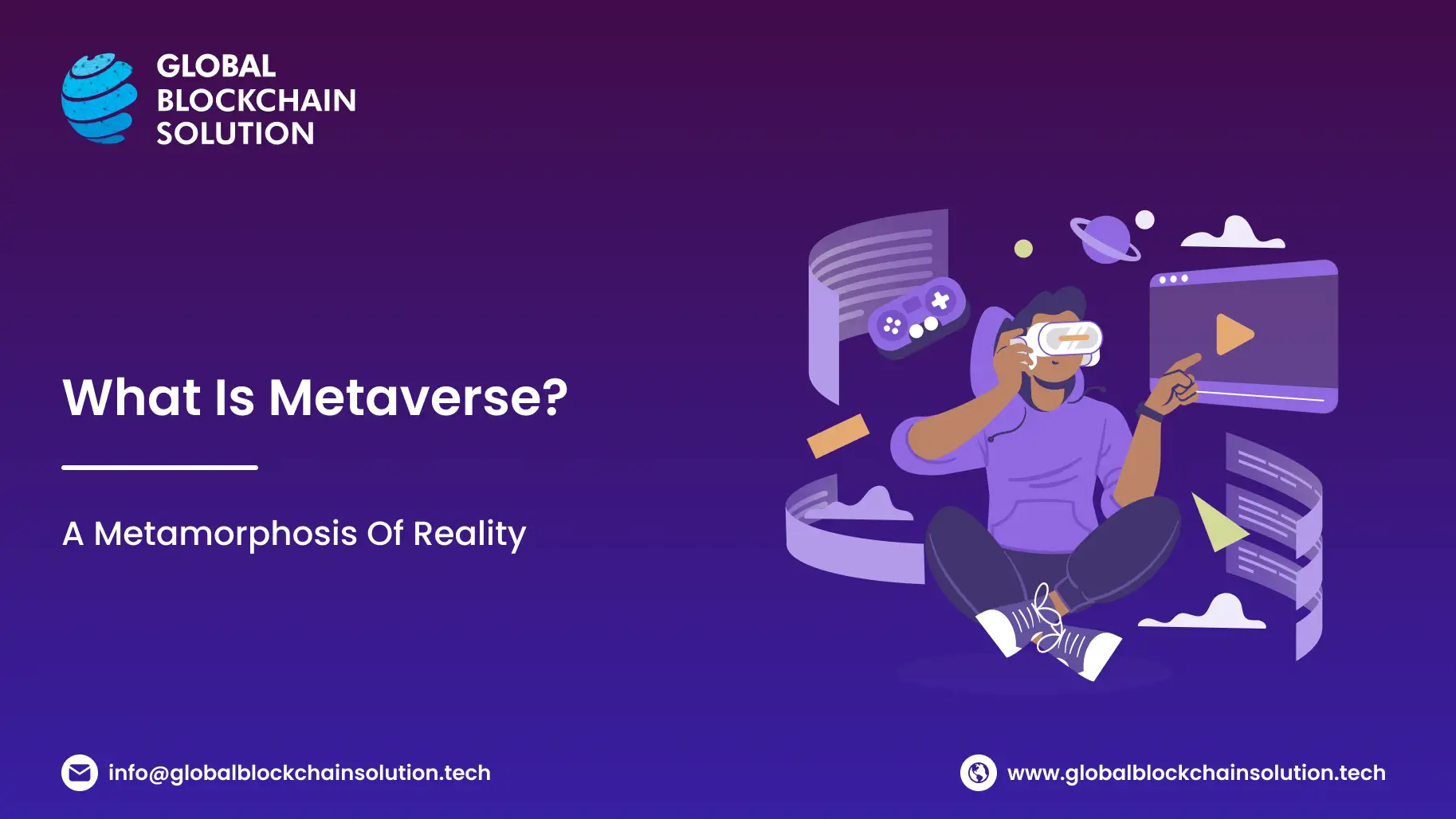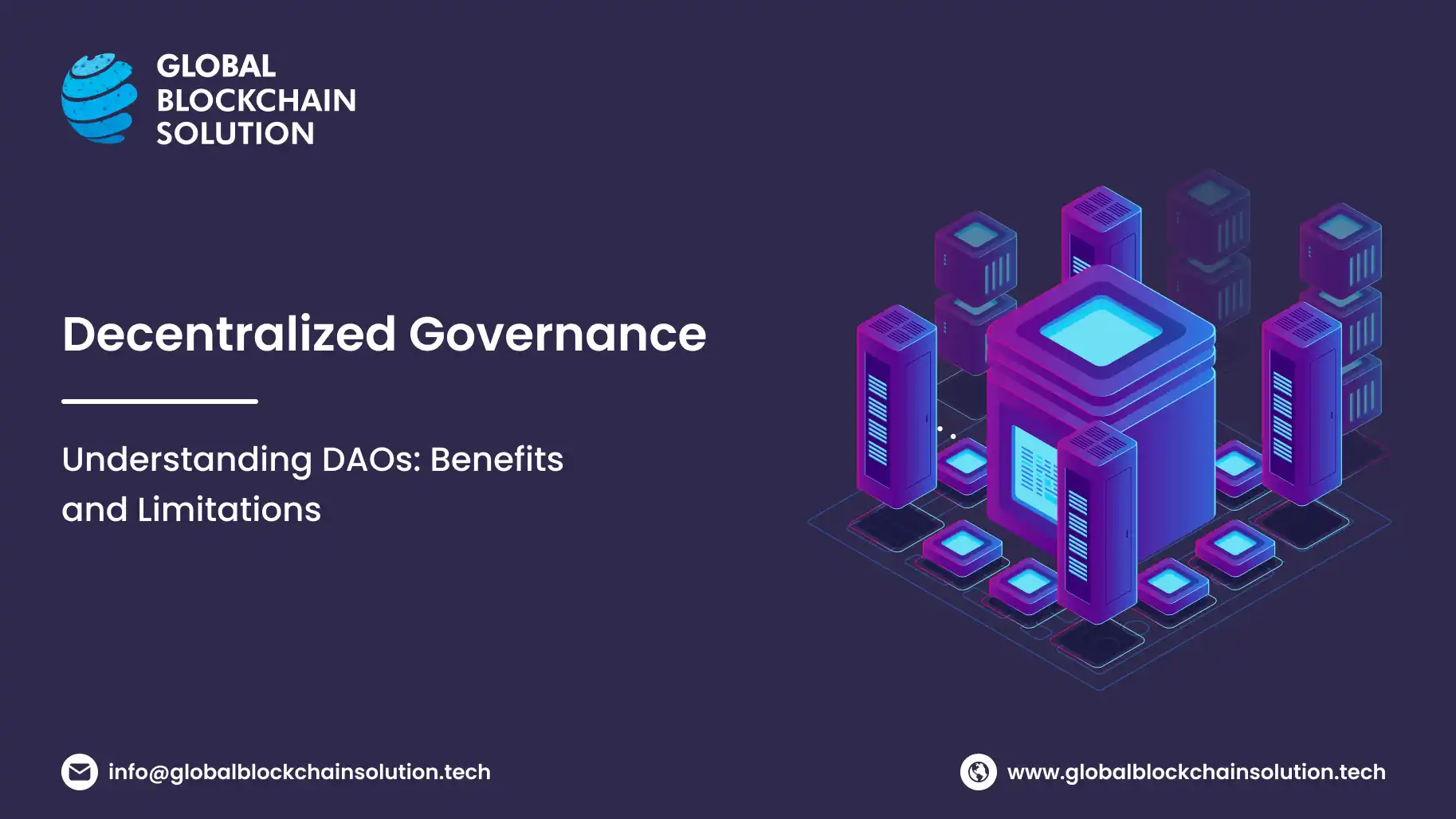In the bustling world of blockchain, every hiccup paves the way for innovation. Remember 2017, when Ethereum faced serious congestion due to the CryptoKitties fury? The event highlighted one of the biggest real-world challenges blockchains face, i.e., “scalability!”
If you're a blockchain technology enthusiast, you've probably heard blockchain networks getting congested, transaction fees shooting up, and the need for solutions that can cater to a skyrocketing number of transactions. The solution? Layer 2 blockchain protocols.
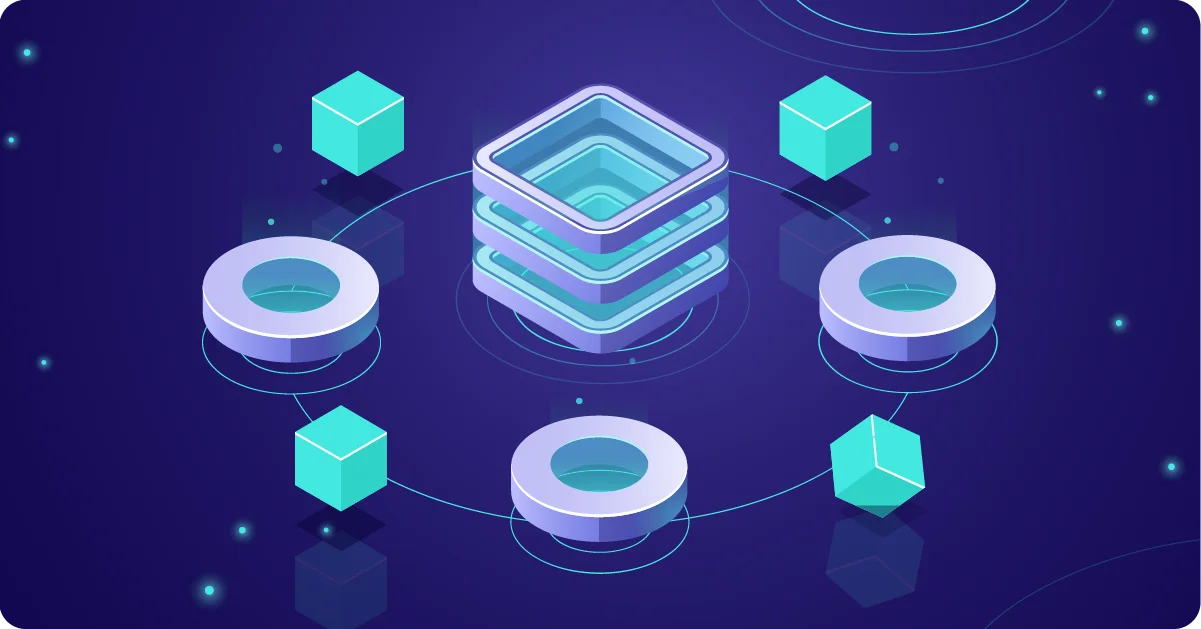
At Global Blockchain Solution, we’ve witnessed the transformative power of blockchain technology by working on its wide-ranging nuances. Today, let's walk you through the intricacies of one such nuance: Layer 2 protocol.
This article will explore the technical details of Layer 2 solutions, their functionalities, benefits, and the obstacles they aim to resolve on Layer 1 blockchains.
This Article Contains:
Understanding the Basics: Why are Layer 2 (L2) blockchains needed?
Let’s delve into the nitty-gritty of Layer 1 protocols to understand the foundational layers of blockchain and why scalability is such a pressing issue.
➢ What is Layer 1 (L1) blockchain?
Layer 1, often referred to as the L1 or base layer, is the underlying blockchain technology. It's the main blockchain where transactions are processed and consensus is achieved. L1 solutions usually prioritize security and decentralization. However, as networks grow, they usually become victims of their success, leading to congestion and slow transaction times.
Also Read: What is a consensus mechanism in blockchain?
The Challenge of Scalability in Layer 1 Blockchains
Imagine a single-lane road suddenly flooded with traffic due to a popular event. The road wasn't designed for such a surge, leading to long traffic jams. This is exactly what happens on a blockchain, especially as transactions on the network increase.
As more users join a blockchain network, the number of transactions increases. But since each block has a size limit – 1 MB in the case of Bitcoin – only a certain number of transactions can be processed in each block. This leads to a backlog during high-volume transactions, which keeps increasing with every block that gets added to the blockchain.
Each blockchain block also contributes to the ballooning of the blockchain’s overall size with time. For instance, bitcoin’s blockchain size currently is over 500 GB at present. This figure is nearly 150 GB more than what it was just two years ago in October 2021 – an increase of 75 GB per year. The chain grew by around 50 GB between October 2021 and October 2022, and a whopping 100 GB between October 2022 and October 2023.
Also Read: Exploring the Evolution of Blockchain: A Journey from 1982 to Present
While not every participant needs to download the entire blockchain, the validators need to, wherein the growing size can cause additional scalability challenges.
Also, with increased demand and limited block space, users are often forced to pay higher fees to prioritize their transactions. This can make using the blockchain expensive and impractical for small transactions or during network congestions.
Why Not Just Expand Layer 1?
A couple of potential solutions immediately prop up in the mind. Why don’t we increase the block size? Or, what if we reduce the interval between the creation of each block? We can also increase throughput by assigning a few network nodes as key validators.
On the surface, these solutions might seem logical. However, they have their own sets of challenges.
Block Size & Validators: At first, increasing the block size seems like an obvious solution to allow more transactions per block. But there's a catch. Bigger blocks take longer to propagate across the network, leading to the risk of more orphaned blocks. Orphaned blocks are those blocks that are discarded from the blockchain due to forks or discrepancies in the network. This can potentially weaken the security of the blockchain.
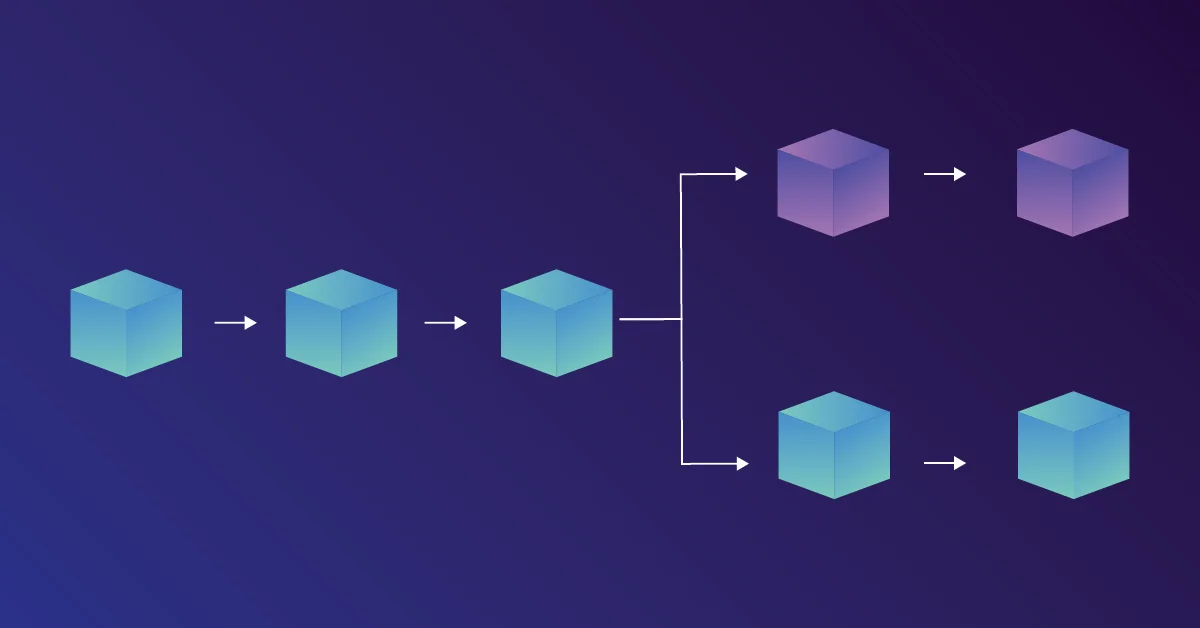
Additionally, larger block sizes or a few key validators would mean that only powerful nodes with larger bandwidth and storage would be able to process and store the blockchain. This goes against the very principle of decentralization that blockchain technology upholds.
Reducing the Interval Between Blocks: Shortening the time between blocks might seem like another intuitive solution. Faster block generation would mean quicker transaction confirmations. But this too has its drawbacks. Shorter intervals can lead to a higher chance of forks in the network, as different nodes might generate conflicting blocks at nearly the same time. This again poses security concerns.
Furthermore, shorter block times might mean that blocks might not always be filled to their maximum capacity, leading to inefficiencies.
➢ Layer 2 Solutions to the Rescue
Given the challenges in simply tweaking Layer 1 parameters, the crypto community turned to developing second-layer solutions, or Layer 2 blockchain protocols. These solutions don't replace the main blockchain but rather build upon it, processing transactions off-chain or in a more scalable manner and then anchoring the results back to the main blockchain.
Examples of Layer 2 solutions include the Lightning Network for Bitcoin and the Optimistic and ZK Rollups for Ethereum. These solutions provide faster transaction speeds, reduced fees, and increased capacity without compromising the security of the main blockchain.
What is Layer 2 (L2) blockchain?
Layer 2 protocols, often referred to as "Layer 2 solutions" or simply "L2s", are secondary protocols built on top of a primary blockchain (Layer 1) to improve its scalability, speed, and sometimes even privacy.
They operate by taking most of the transaction processing off the main chain, which can significantly reduce costs and congestion. You can imagine Layer 2 blockchains as express lanes on a highway. While the main road (Layer 1) might have traffic and congestion, the express lanes (Layer 2) allow for faster movement and more capacity, alleviating some of the traffic from the main road.
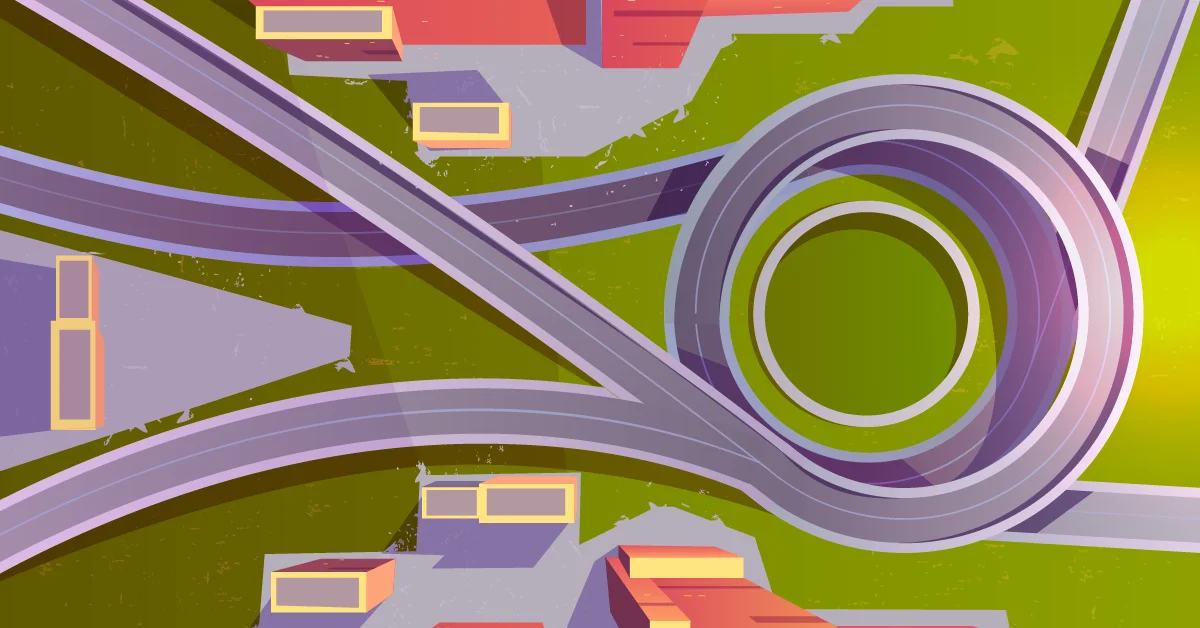
These express lanes don't replace the main road but complement it. They allow users to opt for faster transaction speeds when needed and then settle the results back on the main blockchain. This way, the foundational security of the primary blockchain remains intact while enhancing its scalability.
Now, let’s explore major Layer 2 solutions and discuss their advantages and disadvantages. These are some of the most popular Layer 2 blockchain solutions.
1. State Channels: The On-demand Expressways
State channels function like private tunnels. Two participants create an initial transaction on L1, opening the channel. They can then conduct countless transactions between themselves off-chain.
It’s analogous to a private chat room where you and your friend exchange IOUs, later settling the total amount. One of the best examples of state channels is Bitcoin's Lightning Network. This off-chain solution drastically reduces fees, making micro-transactions, like buying a coffee with Bitcoin, feasible.
State channels are ideal for applications that need rapid transactions between parties, such as gaming, micropayments, and some decentralized finance (DeFi) interactions.
Pros
Speed: Transactions are almost instant since they're off-chain.
Cost-Efficiency: Reduces the need for on-chain fees for every interaction.
Cons
Liquidity Lockup: Funds need to be locked in channels, reducing liquidity availability.
Online Requirement: Participants often need to be online to ensure security, especially for dispute resolutions.
2. Sidechains: Independent Yet Connected Roads
Sidechains run autonomously but remain anchored to the primary chain via pegging mechanisms. Users can "lock" assets on the main chain and get corresponding assets on the sidechain, leveraging its unique features and consensus mechanisms.
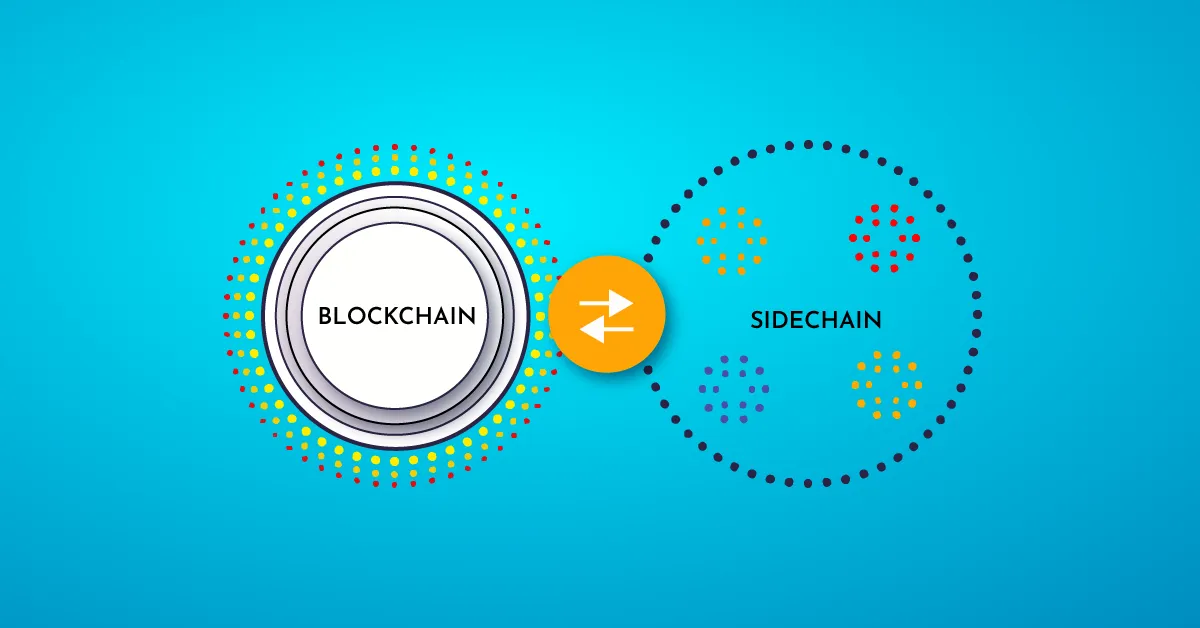
Projects like Liquid (anchored to Bitcoin) offer faster transaction speeds and enhanced privacy features. Meanwhile, Ethereum's xDai sidechain promises predictable payment costs, a must-have for businesses wary of Ethereum's notorious fee volatility.
Sidechains are useful for projects needing faster transaction speeds or alternative consensus mechanisms, but still wanting a connection to a primary chain.
Pros
Flexibility: You can design rules without affecting the main chain.
Scalability: Can process more transactions per second than many main chains.
Cons
Security Trade-offs: Typically, fewer validators mean sidechains might be more vulnerable to attacks than the primary chain.
Interoperability Challenges: Bridging assets between chains isn't always seamless.
3. Rollups: High-Capacity Vehicles
Rollups bundle multiple L1 transactions into one. They split transaction execution from its final verification, reducing the data stored on-chain. There are two prominent types: zk-Rollups utilize zero-knowledge proofs for data compression, while Optimistic Rollups rest on fraud proofs, assuming honesty but allowing challenges.
You can think of zk-Rollups as high-speed trains, compact yet hyper-efficient. Projects like zkSync are pushing this tech frontier, offering Ethereum transactions at a fraction of the cost and time. Meanwhile, Optimism, with its Optimistic Rollups, is courting developers, promising an easier onboarding experience for Ethereum applications.
Rollups are best for general scalability solutions, especially for DApps requiring a high throughput.
Pros
Scalability: Vastly increases the number of transactions per second.
Security: Inherits the security properties of the underlying Layer 1.
Cons
Complexity: Implementing rollups, especially zk-Rollups, can be technically challenging.
Data Availability: For some rollup variants, there are concerns about ensuring that off-chain data is always available.
4. Plasma Chain: The Multilayered Subway Network
The plasma chain's brilliance is its nested structure. It spawns multiple child chains branching off the main chain, periodically committing their state back to the parent.
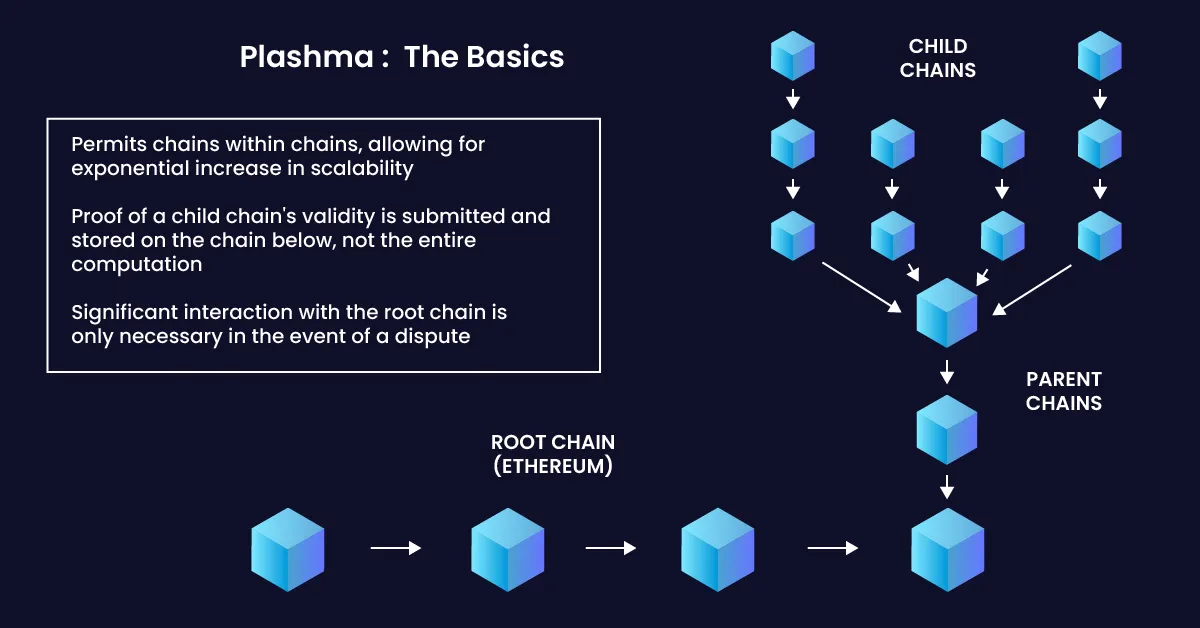
The OMG Network (previously OmiseGo) championed this framework. It's akin to opening specific bus routes for different user groups, ensuring the main road remains uncongested.
Plasma is suitable for decentralized apps that can operate on child chains but still need periodic checkpoints to the main chain.
Pros
Scalability: By offloading transactions to child chains, the main chain remains uncluttered.
Security: Each child chain can have its own custom rules and logic.
Cons
Exit Delays: Moving funds back to the main chain can have a waiting period.
Complexity: The multi-layered structure can be complex to navigate and implement.
Challenges and Criticisms of Layer 2 Protocols
While the innovations behind L2 solutions have made significant strides in addressing scalability, these advancements do not come without their own set of unique challenges and concerns.
1. Security Concerns
Centralization Risks: Some L2 solutions, especially sidechains, might have fewer validators or nodes than their primary chains. This could lead to centralization, with only a few entities controlling the majority of the network, potentially making it more susceptible to collusion or malicious attacks.
-
Data Availability Issues: In protocols like rollups, where not all data is posted on-chain, there's the concern of what happens if off-chain data becomes inaccessible. This could jeopardize the funds or data of users.
2. User Experience and Adoption Barriers
Complex Onboarding: Transitioning to or setting up L2 solutions can be complex, requiring users to move funds or assets between chains or channels. This can be confusing, especially for newcomers.
Adoption Barriers: For the non-tech-savvy, transitioning from L1 to L2 might seem daunting. The crypto world already faces a steep learning curve; add L2 intricacies, and we risk alienating potential adopters.
Lack of Standardization: With multiple L2 solutions available, there's no standardized approach, potentially causing fragmentation in the user experience.
3. Economic Implications
Liquidity Fragmentation: As users move assets to L2 solutions or specific channels, liquidity might become fragmented, potentially leading to inefficiencies in markets or increasing volatility.
Fee Dynamics: While L2 solutions aim to reduce transaction fees, the dynamics of opening and closing channels or moving between layers can sometimes introduce unexpected costs.
4. Technical Hurdles
Interoperability Concerns: As the ecosystem grows, ensuring seamless interactions between multiple L1 and L2 solutions becomes critical. Achieving this interoperability without compromising on security or efficiency is challenging.
Network Stability: The added complexity of L2 solutions introduces more points of potential failure. Ensuring the stability and reliability of these solutions, especially during peak times or under malicious attacks, is crucial.
5. Long-Term Viability
Evolution of L1 Protocols: As Layer 1 blockchains themselves evolve, there's the question of how relevant L2 solutions will remain. If L1 chains manage to significantly boost their scalability, the need for certain L2 solutions might diminish.
Standardization and Regulation: As the blockchain industry matures, standardization and potential regulations might impact how L2 solutions operate, possibly demanding further modifications or adaptations.
By understanding these challenges and criticisms, the blockchain community can focus on refining L2 solutions to ensure they not only enhance scalability but also maintain the core principles of security, decentralization, and user-centricity that the blockchain ecosystem cherishes.
The Future of Layer 2: Charting the Road Ahead
The horizon of Layer 2 solutions beckons with promise, shimmering with potential breakthroughs and paradigm shifts. Here's a speculative map of the fascinating destinations we might encounter on this voyage.
1. Collaborative Ecosystems
L2 Alliances: The future could see Layer 2 protocols joining hands to form coalitions, amplifying their collective strengths to address scalability in a more unified manner.
Interchain Communication: Beyond just bridging multiple L1s, advanced L2 solutions might serve as the universal translators between disparate blockchains, ensuring fluid communication and transaction across platforms.
2. Beyond Financial Transactions
Decentralized Social Media: With enhanced scalability through L2, the next generation of social media platforms could be decentralized, mitigating issues of censorship and central control.
Revolution in Digital Arts: The art world, already touched by NFTs, could further evolve with L2 solutions facilitating real-time, decentralized collaborations and digital gallery experiences.
3. Elevated User Experience
Personalized L2 Dashboards: The user interfaces of the future might be AI-driven, adapting to individual user preferences and offering personalized experiences across different L2 solutions.
One-Click Solutions: Complex operations, like transitioning assets between layers, could be condensed into single-click operations, courtesy of advanced smart contracts and streamlined interfaces.
4. Holistic Security Enhancements:
Predictive Security: With AI integration, future L2 solutions might preemptively identify and address security threats, moving from a reactive to a proactive security stance.
Quantum-Resistant Protocols: As quantum computing evolves, L2 solutions will likely integrate quantum-resistant algorithms, ensuring long-term security and integrity.
5. Governance & Community Involvement:
Decentralized Decision Making: Advanced DAOs (Decentralized Autonomous Organizations) could be intertwined with L2 solutions, promoting community-led governance and decision-making.
Feedback Loops: Real-time feedback mechanisms might be embedded, allowing users to continuously shape and refine the Layer 2 protocols they use.
6. Environmental & Ethical Considerations:
Green L2 Solutions: Emphasizing sustainability, future Layer 2 protocols might prioritize energy-efficient operations, reducing the carbon footprint of blockchain activities.
Ethical L2 Constructs: Recognizing the broader societal implications, new protocols might emerge with embedded ethical guidelines, ensuring the technology benefits humanity at large, without unintended adverse consequences such as economic disparity.
Navigating the unpredictable waters of the future, Layer 2 solutions stand poised to not only enhance blockchain's technical capabilities but to reshape the very fabric of our digital interactions, bridging gaps, fostering community, and lighting up the blockchain universe with ingenuity.
Keen on exploring more about Layer 2 blockchain solutions? Contact us today and book a 15-minute call with our experts to know how you can tap its true potential based on your unique use case.
Frequently Asked Questions
1. What is Layer 1 (L1) blockchain?
Layer 1 refers to the underlying blockchain technology, where transactions are processed and consensus is achieved. It prioritizes security and decentralization but can face scalability issues as the network grows.
2. Why is scalability a challenge in blockchain?
Scalability becomes a concern as more users join the network and the number of transactions increases. Given the size limits of each block (e.g., 1 MB for Bitcoin), only a specific number of transactions can be processed in each block, leading to potential backlogs.
3. Why can't we expand Layer 1 to address scalability?
Solutions like increasing the block size or reducing the time between blocks introduce new challenges such as more orphaned blocks, risks to security, or inefficiencies.
4. What is a Layer 2 (L2) blockchain solution?
Layer 2 solutions are secondary protocols built on top of a primary blockchain (Layer 1) to enhance scalability, speed, and sometimes even privacy. They process most transactions off the main chain, reducing costs and congestion.
5. Can you provide examples of Layer 2 solutions?
Yes, examples include the Lightning Network for Bitcoin and the Optimistic and ZK Rollups for Ethereum.

